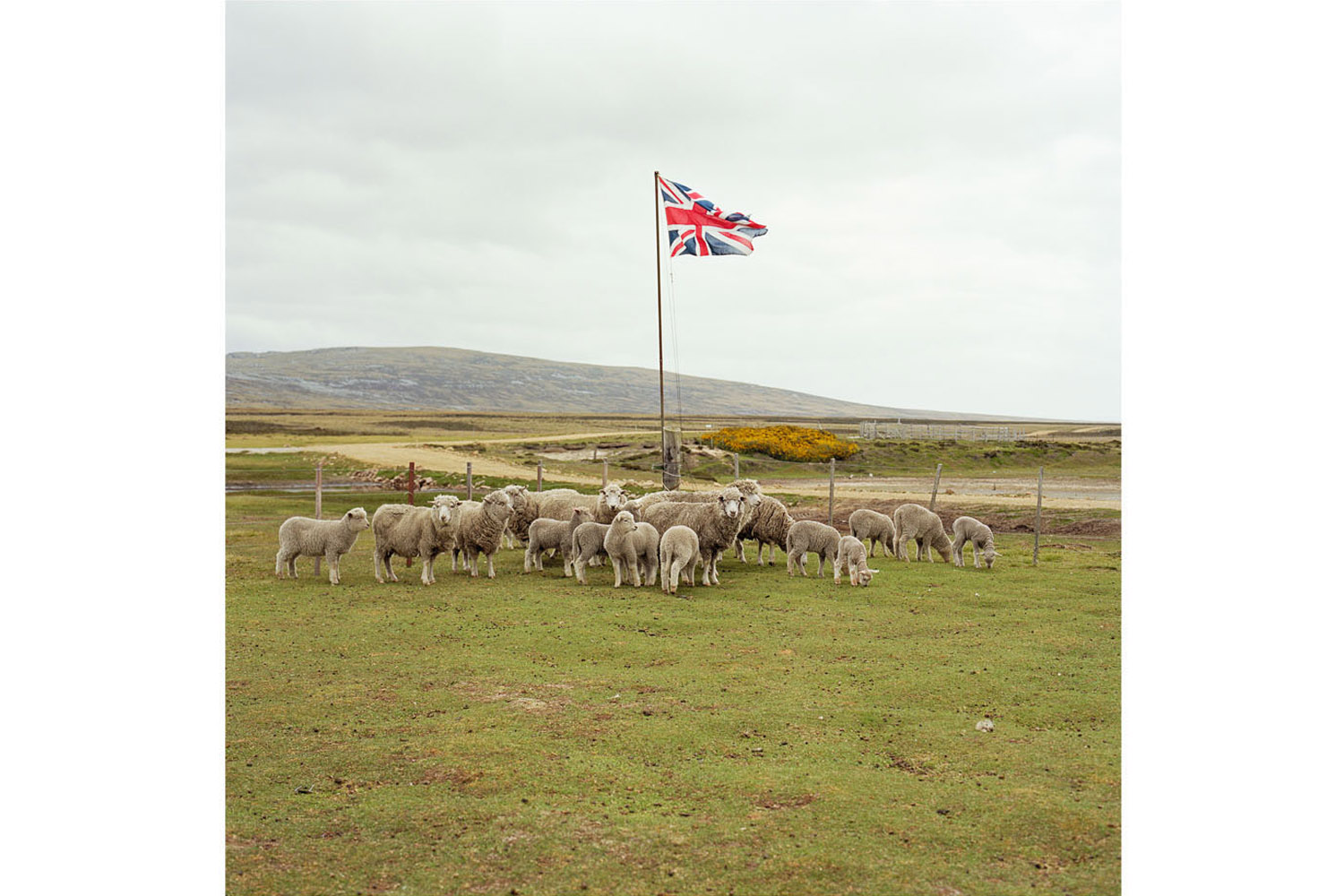
Setting sail from the coast of South Africa, the MV Edinburgh — part cargo ship, part fishing boat — made haste towards the coordinates: 37° 6’41.91″S by 12°17’5.56″W, in the heart of the great South Atlantic Ocean.
Traversing more than 1,700 miles of open water, with British documentary photographer Jon Tonks aboard, the ship and its crew would see nothing but sea and sky for a full seven days before the conical Queen Mary’s Peak was finally spied on the western horizon.
Here, on the 80-square miles island of Tristan da Cunha, isolated and afloat between the southern coasts of Africa and Latin America, resides one of the very last relics of a far-flung British reign —now lost to history.
“I like the idea that there are some people in the UK who don’t know about these places,” Tonks told TIME in a recent interview about his current project, Empire. He has spent the last five years documenting Tristan da Cunha, the near-equatorial Ascension Island, St. Helena and the Falkland Islands — four disparate territories shaped by the once global British Empire.
The lack of public awareness of the status and history of places like Tristan da Cunha, however, is likely a function of location, location, location rather than willful ignorance: to visit these islands, Tonks has traveled more than 50,000 miles, requiring more than 20 flights and three-plus weeks at sea. The geographical extremes of the nearly-vanished empire has placed huge demands on both his time, and his patience.
But the payoff – this salvaged visual history — has been worth it.
Ascension Island, for example, was used as an intelligence hub, radio base and refueling station by the British during World War II. Today, the small volcanic island, located 1,000 miles to the west of Africa and 1,400 miles east of South America, is home to roughly 800 residents, mostly families of contact workers for American and British companies.
“Everyone says hello to everyone [on Ascension Island],” Tonks told TIME, hinting that the island mentality seems to make people more personable than those in most European or American cities.
Over time, the sensibility can be contagious, he said.
“The day I got back to London from my first trip, I waved to a double decker bus,” he admitted, clearly a bit embarrassed. “I thought, ‘God, I look mad.'”
But if the sense of isolation most intense on Tristan da Cunha, which, without an airstrip, can only be reached by boat, then the Falkland Islands — located off the coast of Argentina — is the most well known of his destinations.
“The only reason that people know about the Falkland Islands is because of the British military involvement,” he told TIME. Yet his Falkland images, he added, allow his UK audience to “uncover a history that is their own,” while reflecting on a period in Britain’s past that can, at times, seem almost silly.
For instance, after spending time in the Falklands, Tonks characterized the 1982 war as “a village being invaded by a country.” Today, he said, the British have left their mark, with a handful of Victorian homes still doting the landscape on the largely uninhabited island.
But as the project progressed, Tonks began to reflect not only on the tentacle-like reach of imperialism, but also on the subtleties of life in extreme isolation: how small the world can become when one’s livelihood is proscribed by the outer reaches of the small island.
On Ascension, the community produced their own weekly newspaper, Tonks told TIME. “It’s about 10 pages stapled together. ” One week the paper’s front page read: “Have you seen the cow?”
While farming had been used for subsistence on the island for generations, the runway built during WWII had made it less expensive to simply fly in foodstuffs. As a result, most farms were shuttered, and over time livestock simply disappeared. By the time Tonks arrived, there was only one cow left — and it was missing.
“I made it my mission to find the cow,” said Tonks, who stumbled upon the animal while climbing through the mountains one afternoon. As it happened, the cow tumbled to its death two weeks after Tonks tracked her down. “I guess it’s important that I captured the final picture of the last cow.”
But for Tonks, who still works as an editorial photographer for a number of European publications, Empire has always been more historical than political. It is an attempt to create a document — a permanent record of spaces that much of the world, and even Britain, has forgotten.
“The whole project has been about providing insight into what life is like in these places,” he said. “This history of empire includes the stories of everyday life, and the travel required to get there.”
More important than the striking images, he added, is the knowledge that these places have stories to be told. “This project” — perhaps, in part, like the expansiveness of empire that inspired it — “was driven by the journey.”
Update, January 2014: The original version of this article included a quote from the photographer taken out-of-context. That quote has been omitted.
Jon Tonks is a documentary and portrait photographer based in the United Kingdom. His monograph Empire is available from Dewi Lewis Publishing from February 2014.
More Must-Reads from TIME
- Donald Trump Is TIME's 2024 Person of the Year
- Why We Chose Trump as Person of the Year
- Is Intermittent Fasting Good or Bad for You?
- The 100 Must-Read Books of 2024
- The 20 Best Christmas TV Episodes
- Column: If Optimism Feels Ridiculous Now, Try Hope
- The Future of Climate Action Is Trade Policy
- Merle Bombardieri Is Helping People Make the Baby Decision
Contact us at letters@time.com